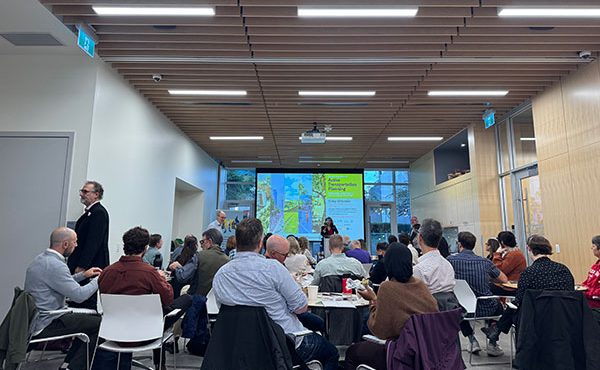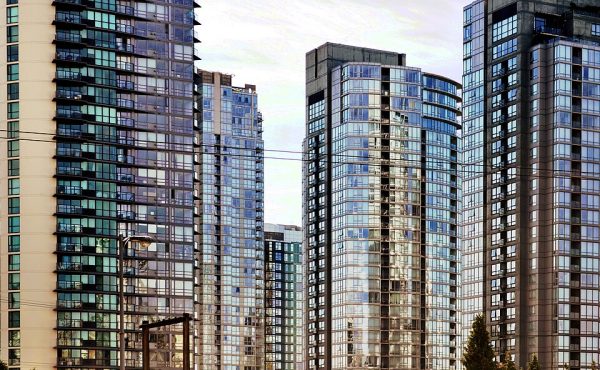
Cambie Connected: Cycling Smithe, Nelson, Beatty, and the Bridge
via small places
It may not have the glamour of the Burrard Bridge or the budget. But it’s five years, five projects, five kilometers of protected bike lanes. A doubling in bicycle volumes in a decade – here’s the Cambie Bridge, connected.
Expo 86 was when Vancouver became the city we know today – except for cycling. Despite a transportation theme, the brand-new Cambie Bridge left cycling on the roadway (the 1988 bike plan supporting essentially no types of dedicated infrastructure). In the 1990s, as Vancouver rolled out side-street bikeways, one of the bridge’s sidewalks was simply declared a shared path, without connection even to the still-developing waterfront cycling route.
If any event brought change for cycling it was the 2010 Olympics, which had shown that protected bike lanes could be run along Dunsmuir right into downtown. But with barely a painted bike lane connection, increased cycling downtown only made the situation worse. A decade of growth doubled cycling volumes to the point that the east “sidewalk” had more bike traffic than foot.
Starting with the City of Vancouver’s Transportation 2040 plan in 2012, work began to tie the Cambie Bridge into the downtown protected bike lane network. At first it was a single, key block, that replaced riding through a bus stop, a crosswalk, and a grey area in exactly where the shared sidewalk ended.
Then, in 2016, a major leap forward in time for bike share: protected bike lanes on Beatty to connect to Dunsmuir, and on the direct Smithe/Nelson couplet as far as Richards. The mixing zone design on Smithe would be replaced with protection through the intersections in early 2018.
But success in downtown meant the bridge saw more riders, more conflicts, and more hospital visits. Going back to cycling the roadway started to look attractive again, and some had never left. The southbound curb lane was exit-only, though less traffic certainly didn’t mean lower speed. It showed a way forward to separate foot, bike, and car – finally, in 2018, a southbound protected bike lane on the Cambie Bridge, relieving pressure on an east path that could now be painted with walking and northbound cycling sides.




One comment
Nice work! I appreciate the way everyone, whether walking, biking, or in vehicles, has a comfortable and direct crossing for the full range of options, while enjoying that splendid, panoramic view. Good show, and thanks.